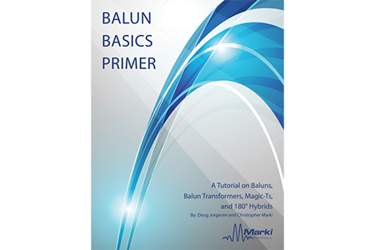Baluns Basics Primer: A Tutorial on Baluns, Balun Transformers, Magic-Ts, and 180° Hybrids
By Doug Jorgesen and Christopher Marki

The balun has a long and illustrious history, first documented in the literature as a device to feed the television transmitting antenna for the Empire State Building1 in 1939. Since then designs have evolved dramatically, and applications have evolved beyond driving differential antennas to include balanced mixers, amplifiers, and signaling lines of all types.
Baluns have long been ubiquitous in low frequency audio, video, and antenna driving applications. The need for high speed, low noise data transfer has driven the advancement of the balun to higher frequencies and superior performance. Despite these advancements, information about baluns remains scattered and confusing; this application note seeks to resolve this problem by clarifying the basic characteristics of baluns.
First we will define what a balun is, what it does, and how it is different from other components. Next we will define generic balun specs, which we then use to discuss the different types of baluns and their properties. Finally we will discuss the applications of baluns and how to determine what kind of balun is required for several different purposes.
Get unlimited access to:
Enter your credentials below to log in. Not yet a member of RF Globalnet? Subscribe today.
